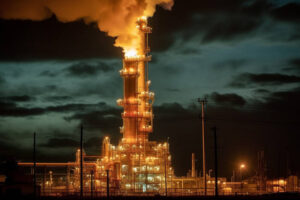Welcome to Extreme Investor Network, where we provide you with unique insights and analysis on the stock market, trading, and everything related to Wall Street. Today, we dive into the world of natural gas futures, exploring the impact of Hurricane Debby and contrasting weather patterns on market dynamics.
Early Tuesday, natural gas futures were trading within a narrow range as traders kept a close eye on Hurricane Debby and changing weather conditions across the United States. While the southern and western regions faced intense heat, the Northern Plains through the Great Lakes were experiencing cooler temperatures, potentially moderating overall demand.
In recent news, Canadian Natural Resources Ltd. announced a strategic shift in focus amidst low natural gas prices. The Calgary-based company plans to slow down natural gas production and redirect efforts towards higher return multilateral heavy oil wells. This decision reflects the company’s cautious approach to managing supply in the current market environment.
The impact of Hurricane Debby on natural gas futures was evident as the storm made landfall in western Florida, bringing strong winds and heavy rains. The potential for power outages and reduced cooling demand in the Southeast added to the market’s bearish sentiment. Coupled with cooler weather in the north and robust storage levels, natural gas futures faced challenges in finding support levels.
Looking ahead, weather forecasts play a crucial role in determining market demand for natural gas. While high pressure dominates most of the U.S., driving strong national demand with temperatures in the 90s to 100s, cooler temperatures in the Midwest and New England provide some relief. The Southeast, impacted by Hurricane Debby, can expect more comfortable weather with moderate levels of demand.
In terms of market forecast, the outlook for natural gas futures remains cautiously bearish in the short term. With mixed weather patterns and the decision by Canadian Natural Resources Ltd. to curtail production, supply is expected to remain ample, potentially limiting significant price increases. Traders should closely monitor evolving weather patterns and production adjustments for potential market cues.
Stay tuned to Extreme Investor Network for more exclusive insights and analysis on the stock market, trading strategies, and the latest trends on Wall Street. Let us guide you towards making informed investment decisions in today’s dynamic market environment.

